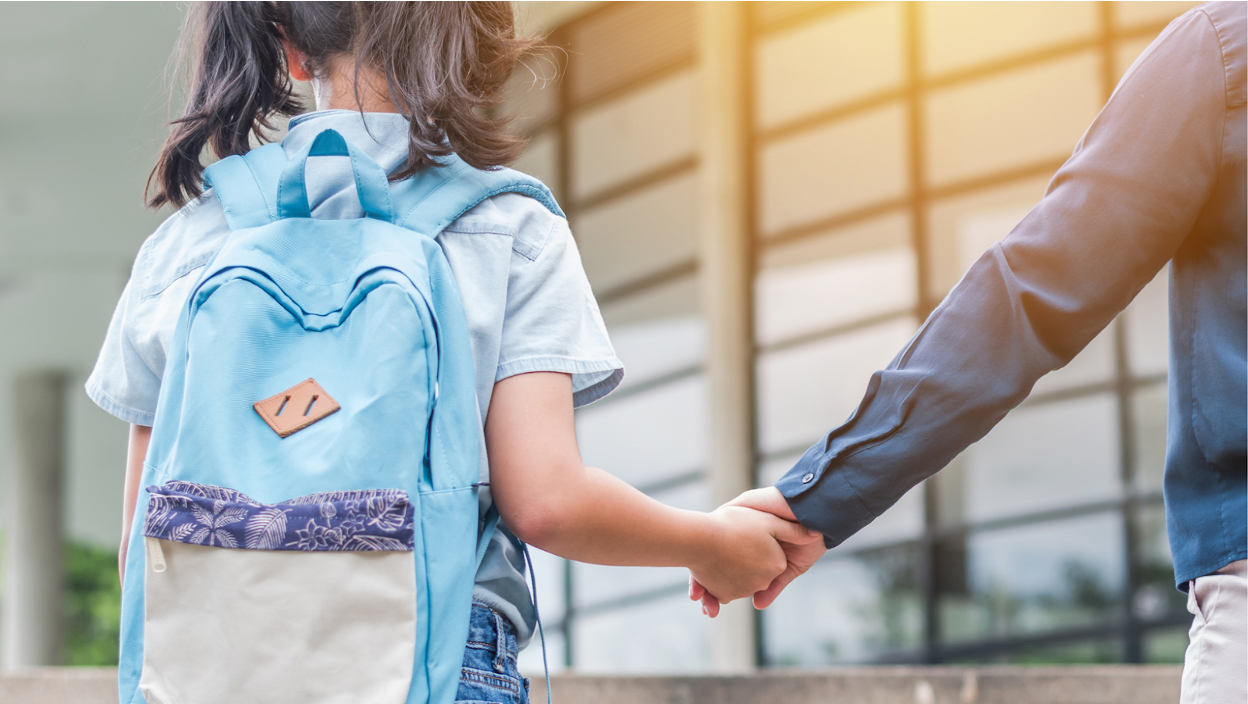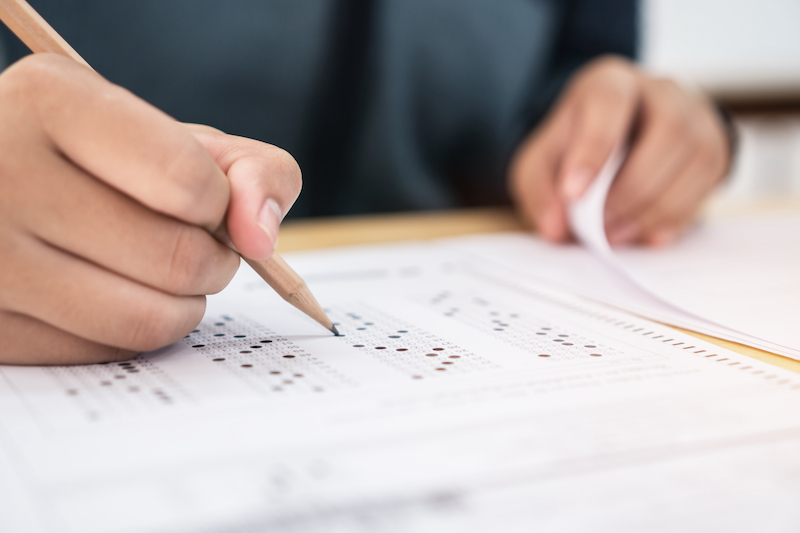With the first day of school approaching, parents and guardians are scrambling to get school supplies, working to reinstate routines, and trying to prepare their children to rejoin a physical classroom for the first time in months or longer. For many students—particularly students who think and learn differently—the excitement of a new school year is often paired with worry or fear. Those internal worries can manifest behavioral changes or physical discomforts, and leave parents unsure about how to help in a way that makes their child feel supported while building the coping skills they need to face the unknowns of a new school year.
At Learnfully, our specialists help learners and their community develop plans with this exact goal in mind: strengthen the skills they need to independently take on challenges while providing a supportive ecosystem that meets the needs of the whole child. Here are some ways that you can develop similar plans to build confidence and reduce anxiety as they transition back to school.
The Pandemic & Back-to-School Anxiety
Neither children nor adults need a formal diagnosis of anxiety to experience symptoms, although “39% of teenage learners (13-18) are diagnosed with one of the following: Generalized Anxiety Disorder, Phobias, Panic, Social Anxiety” according to Mental Health America, and across all age ranges, anxiety has significantly increased over the past 18 months. Massive schedule changes, new instructional methods, lack of exposure to social settings, and varying expectations have all contributed to spikes in school-related anxiety. Understanding the different types of anxiety then developing healthy habits when addressing symptoms is crucial to helping your child navigate fears.
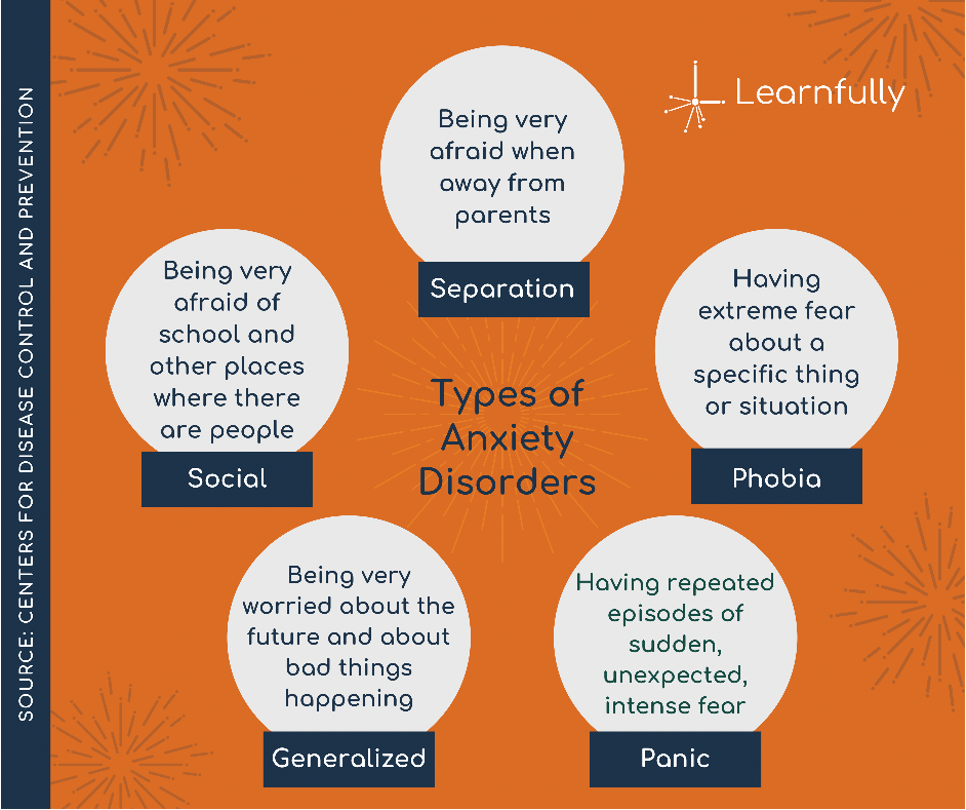
So, how do I know if my child is feeling anxious about the upcoming school year?
Transition periods often produce normative behaviors we’re used to seeing, such as butterflies in the stomach, restlessness, and even sleep disturbances. Your emerging first-grader may have an increase in clinginess or your high schooler may become restless. These are nervous behaviors that we’ve all experienced at some point, and when experienced in reasonable amounts, stress can be helpful to a child’s ability to develop coping skills and build confidence.
When these behaviors become consistent or start limiting a child’s ability to complete tasks or attend school, it can develop into an anxiety disorder. And for students who are neurodiverse or have specific learning disorders, the risk of experiencing back-to-school anxiety is even higher. If you feel your child is experiencing continued physical or emotional symptoms of anxiety, it is important that you consult a pediatrician or mental health professional that can best advise with next steps.
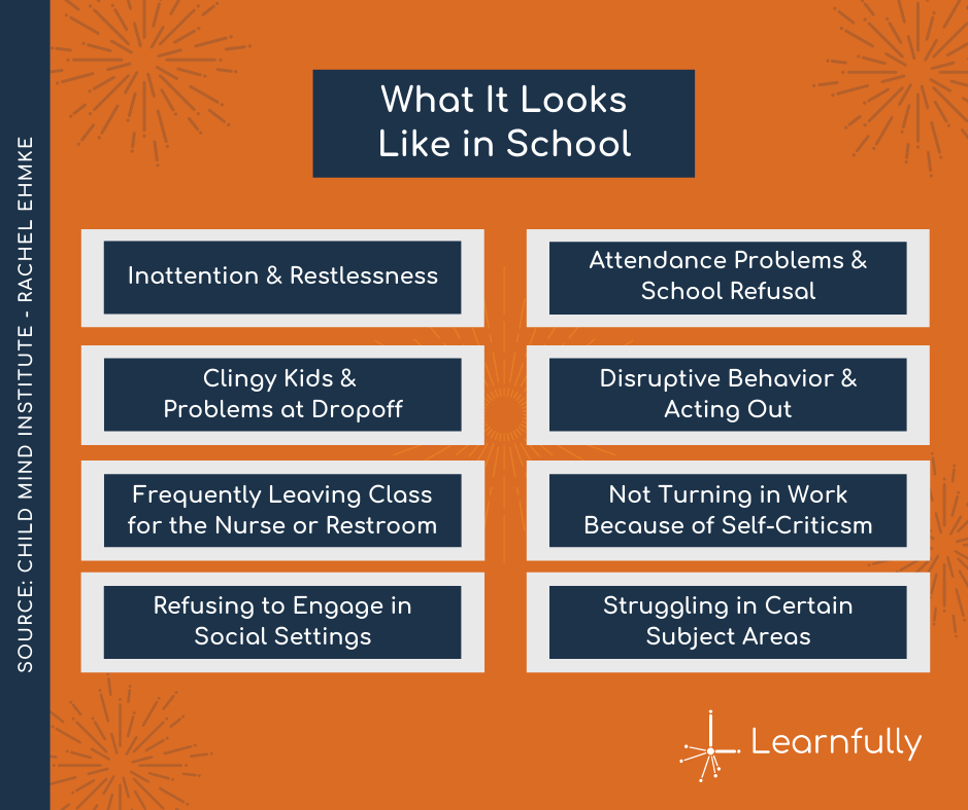
Top Tips for Parents and Guardians:
1. Actively listen and validate feelings. If your child expresses worry, actively listen instead of using a common dismissal response. Saying “There’s nothing to worry about” puts them in conflict with what their body is telling them. This can make them question themselves instead of questioning the anxiety as a separate entity. It can also lead to children trying to ignore feelings or dismiss warning signs that arise in the future.
Instead, offer them a safe-space to share with you what they’re feeling and remind them of the positives that come with school. Saying something like, “I understand why you’re nervous. You’ve been home for a while and being away from us can feel scary. But there are also exciting things at school, too, like…” This reminds them that they can feel more than one emotion at the same time, which validates the feelings but challenges the anxiety.
2. Help them mentally separate from the anxiety. Sarah Levine, a marriage and family therapist that specializes in anxiety disorders among other special interests, shared in our most recent webinar that helping a child better understand anxiety disorder starts with a shift in perspective. Remind them that the anxiety is separate from them. They are not the problem that needs to be addressed, the anxiety is the problem. This reminder can help children challenge their anxiety without feeling like they are challenging who they are.
3. Develop a routine before school starts. The routines of summer break differ from the procedural timelines of school days. Starting a routine for meals, sleep, media consumption, and other responsibilities even a week or two early can give your child a sense of mental calm, and, in turn, ease the stress of transitioning back to school.
4. Let them struggle. As parents or educators, we want to help a child experiencing anxiety by relieving the feelings of nervousness they are having. Sometimes, we over-control a situation or try to rescue them from the problem. Dr. Anne Marie Albano, the Director at Columbia University Clinic for Anxiety and Related Disorders, explains that the “undoing of anxiety is letting them struggle.” Anxiety craves avoidance and refusal, a quick way out of the fear-causing situation. By letting your child work through the problem instead of solving it for them, and praising them along the way, you are strengthening their coping skills. We need to be their coaches, guiding and providing support, but once we start over-controlling a situation, it can backfire.
5. Expose them to what is feared, then practice. If letting them struggle begins to undo anxiety, practicing that same struggle with repetitive exposure is anxiety’s Achilles’ heel. Exposure trains the mind that the situation does not always require a fight-or-flight response and increases their confidence to confront not only the situation, but the thoughts telling them there is something to continuously fear.
If as parents or educators we let the child avoid these situations, we are solidifying the idea that there is something to fear. Practice navigating the hallways of a new school a few days before or even simulate the first conversation with a new teacher. This can make the task seem less scary and more manageable to learners.
6. Normalize talking about anxiety. Be open with your own personal anxieties, and share how you have worked through them. It’s healthy to share personal success stories as well as times when you didn’t respond the way you would have liked to. What were the results of both? What can be learned from what you did or didn’t do? Sometimes sharing mistakes and how you navigated them afterward can be just as powerful as sharing positive experiences with anxiety.
7. However, avoid projecting your own anxieties onto them. It’s not just our children who are struggling with anxiety; parents are experiencing it, too. We worry about whether or not they will make friends, or if they can handle the increased workload in high school. If we project these worries onto them, worries they are most likely contemplating themselves, we are reinforcing that fear. Instead of asking “Are you nervous about being able to handle how much work you’ll have in Algebra?” ask, “What are you looking forward to this year?” Instead of “Did you make any friends today?” consider, “What’s one positive thing that happened at school today?”
8. Share and collaborate with your child’s learning team. From an educator’s perspective, sharing information with their teacher (to the extent that you are comfortable) can be extremely helpful, not only for them to recognize the signs of anxiety quickly, but to proactively develop a plan for intervention and support. It strengthens the success of coping and problem-solving skills to be generalized within their ecosystem of support, both inside and outside of the classroom. Don’t worry that you are bothering the teacher; I want to know what works and what doesn’t, because it is the best way to ensure generalized success.
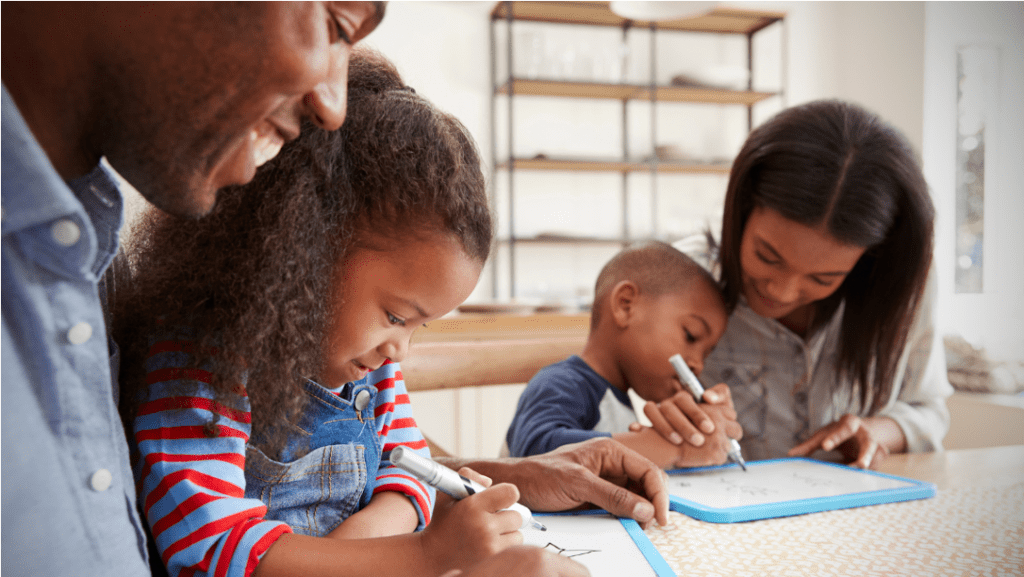
As an educator, coach, and parent to neurodiverse kids, the most effective form of teaching personal skills has been modeling. One of my favorite quotes from James Baldwin says, “Children have never been very good at listening to their elders, but they have never failed to imitate them.”
Children absorb our energy, and according to the Child Mind Institute, “Anxious parents send anxious kids to school.” Being able to model a sense of calm or demonstrate positive problem-solving skills in authentic situations will naturally teach your child to do the same. We can talk about expected behaviors, but until they see that we can do it too, it is hard for children to emulate it. Practicing deep breathing techniques when anxieties arise in us or self-correcting after we’ve responded negatively are strong ways to reinforce those positive coping skills.

Alisha Waldrop is a life-long learner who has worked in education for ten years serving as a classroom teacher, educational leader, literacy coach, advocate, design strategist, and curriculum developer. She graduated from Queens University of Charlotte with a BA in English Literature and Education as well as an MFA in Creative Writing. She now lives in Charleston, South Carolina where she loves playing sports, writing poetry, and spending time with her family.
